
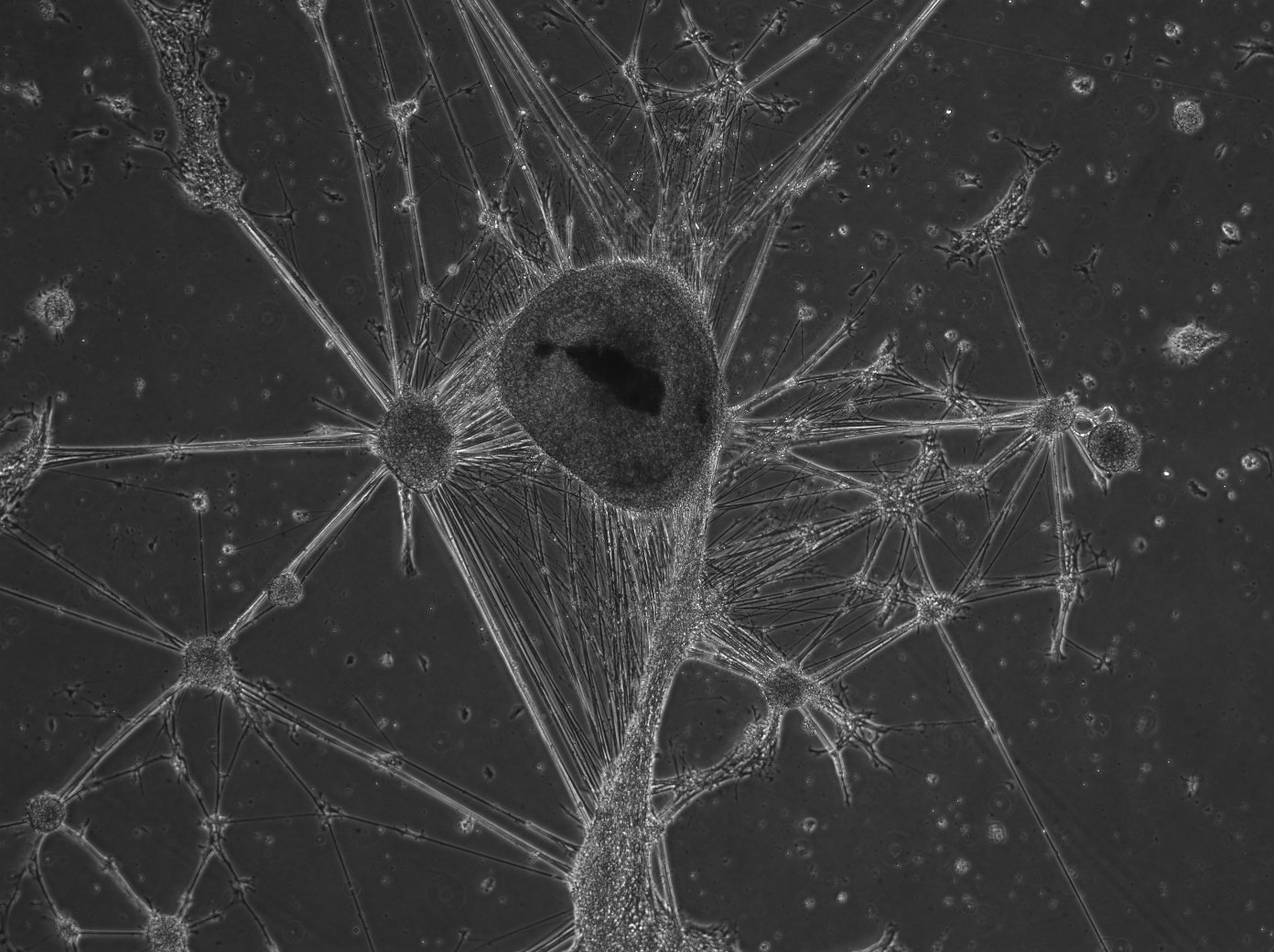
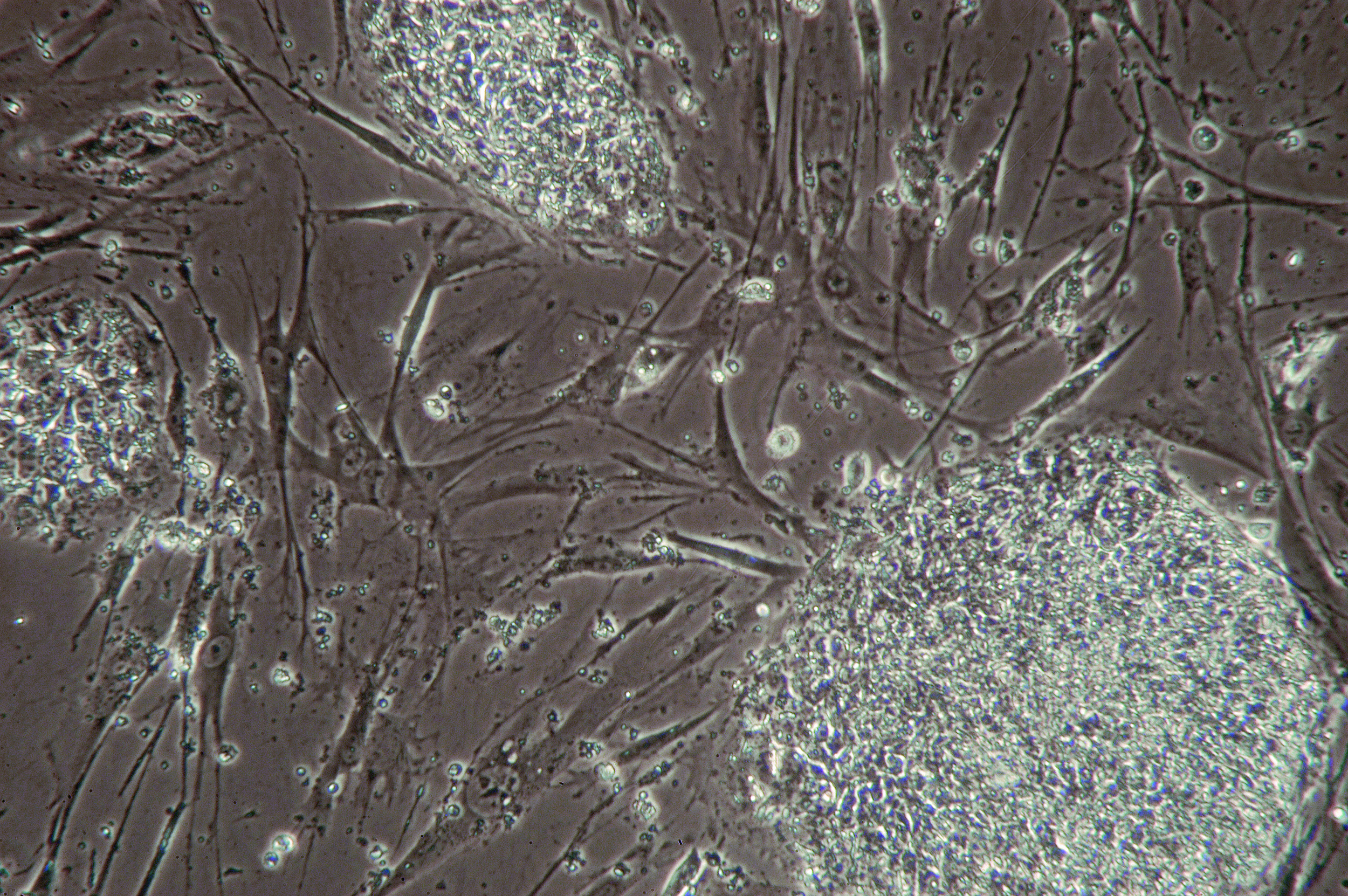
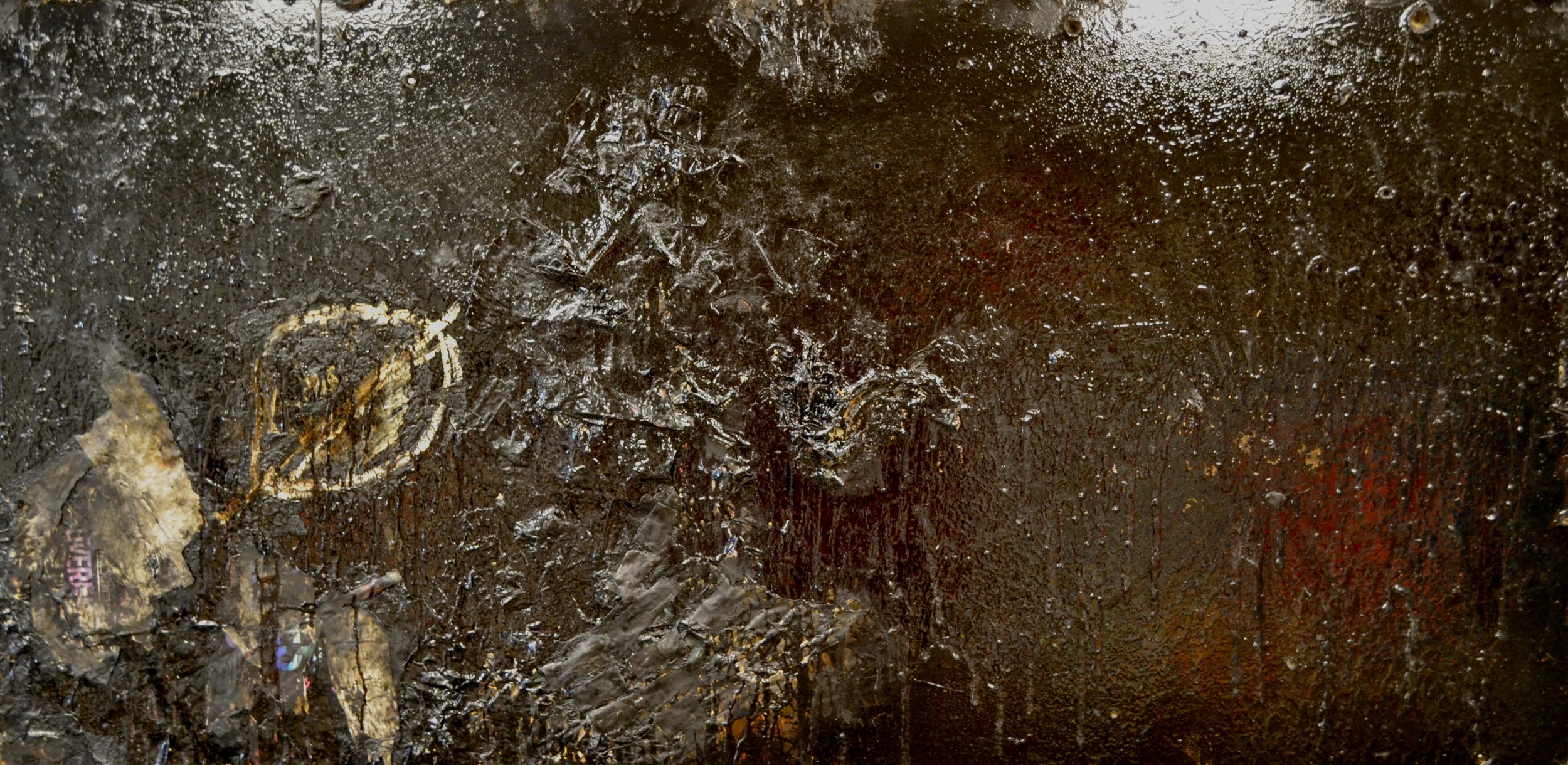
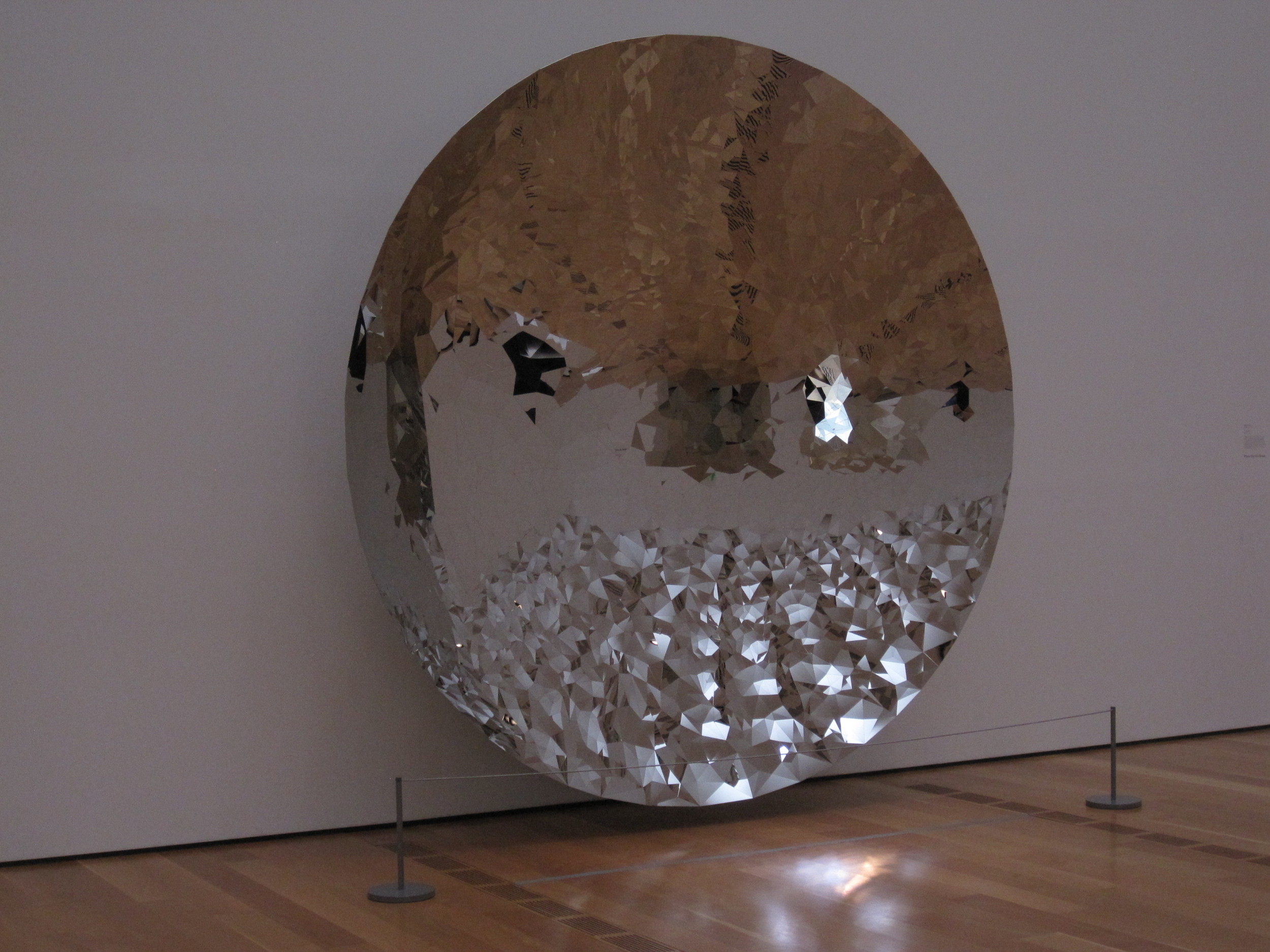
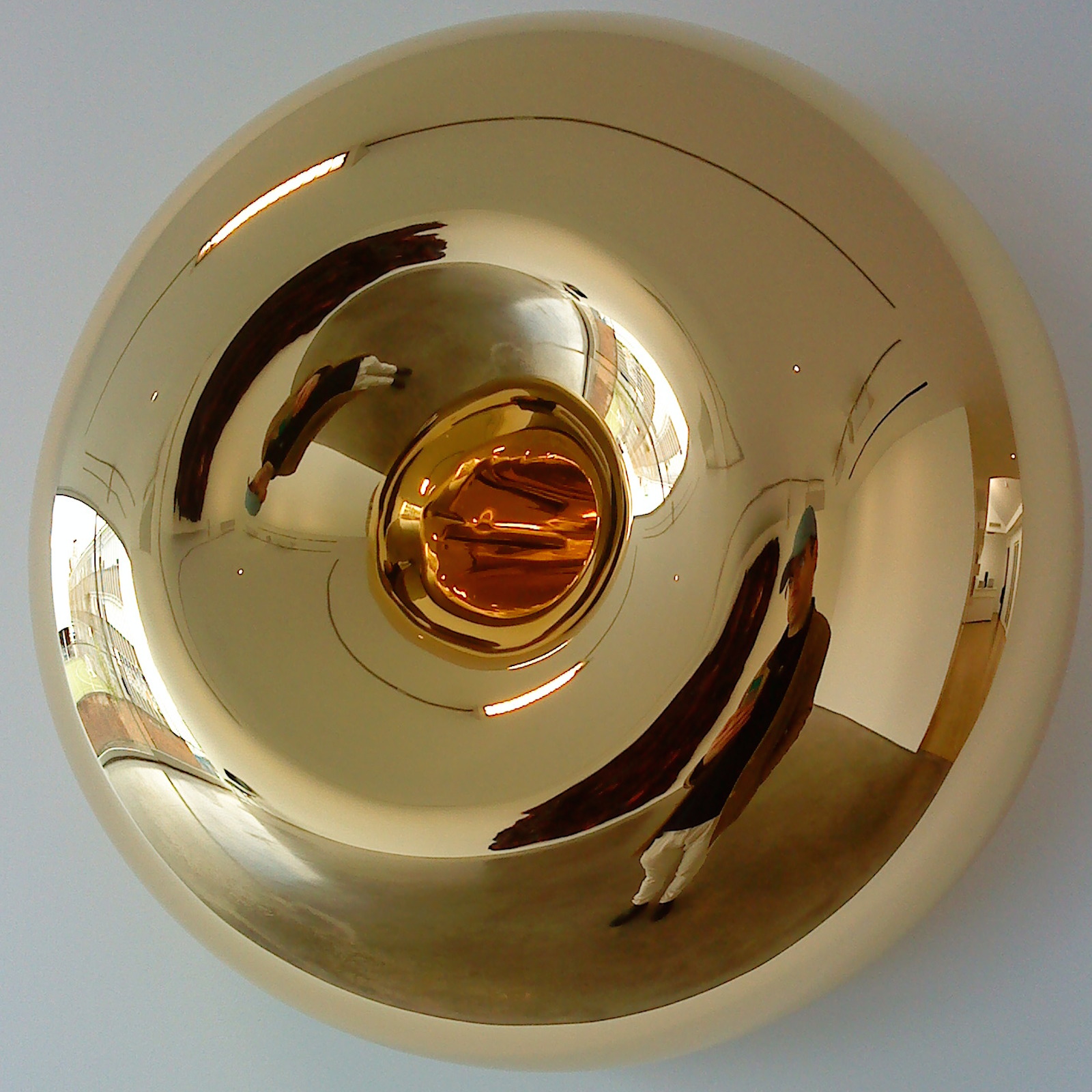

The primary inspiration for the Orb series of paintings came to me from some time I spent closely studying microscope images of cells. I was interested in capturing the conflicting feelings of closeness and distance that we feel when we look at these images. How can these slides of human cells feel so close to us and yet are simultaneously so isolated, so unfamiliar?

I am fascinated by the dual feelings that strike me when I look at these images—attachment and repulsion, warmth and cold, sameness and difference, filth and sterility.
The surfaces of cells in microscope images can seem almost impossibly foreign to the mental places I imagine when I think of the spaces inside my own body. I wanted to explore this notion of foreign space using physical materials, which caused me to experiment with tar, plaster, and other unusual media in this series of paintings. Tar is industrial, viscous, and noxious, and yet it is capable of creating the organic, fragile artistic forms you see in Orb I.

Anish Kapoor, Untitled, Stainless Steel, 2010. Photo by Heila Rogers
The surface of Orb II is covered almost entirely by a slick, acrid layer of tar, giving the entire piece a shiny and reflective quality. The reflections are so vivid that you can almost see yourself in places. Almost. Not quite. Something is off.
These were the same feelings I had after seeing an Untitled series of reflective hanging sculptures by the British-Indian artist Anish Kapoor. His sculptures captured my imagination in the ways they made use of reflection to play with the gaze and body of the viewer. Gazing at any painting can stir thoughts and emotions, cause appreciation of technique, bring you tears, and more. Anish Kapoor's sculptures deny the typical notion of the viewer's gaze. Their reflective surfaces force the viewer to be involved in some way with the construction of the artwork, but the reflection is distorted, and it splits your image into many shattered, unrecognizable pieces.

Anish Kapoor, Untitled, Stainless Steel and Gold, 2011
In some sense, Kapoor's sculptures are non-objects. We don't have an intuitive sense of how to interact with them as we would a normal painting or object. I wanted to use tar as a reflective surface to achieve a similar effect, playing with the viewer's preconceived notions of their relationship to the artwork.